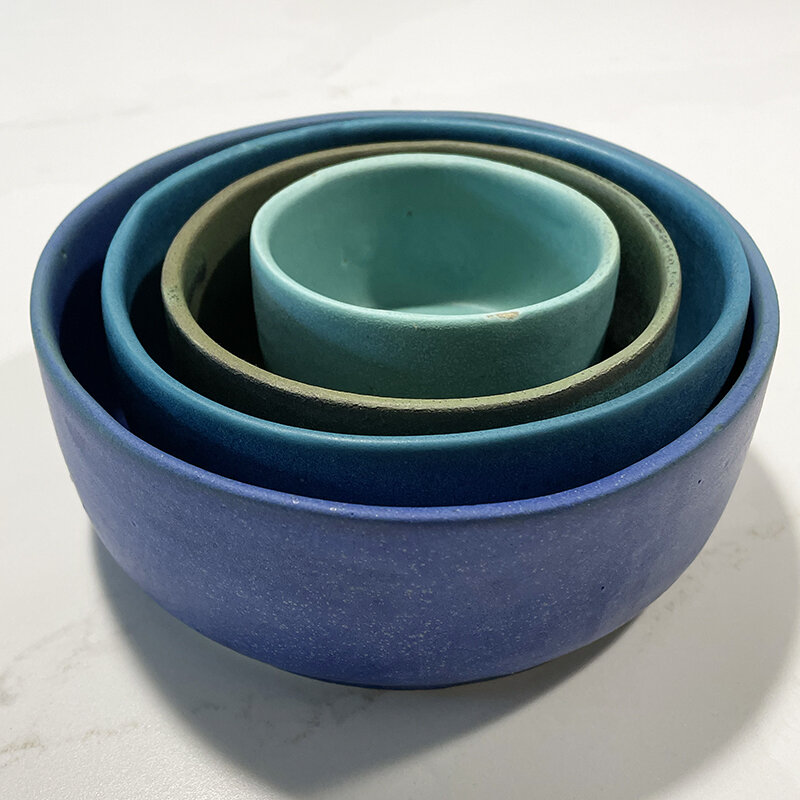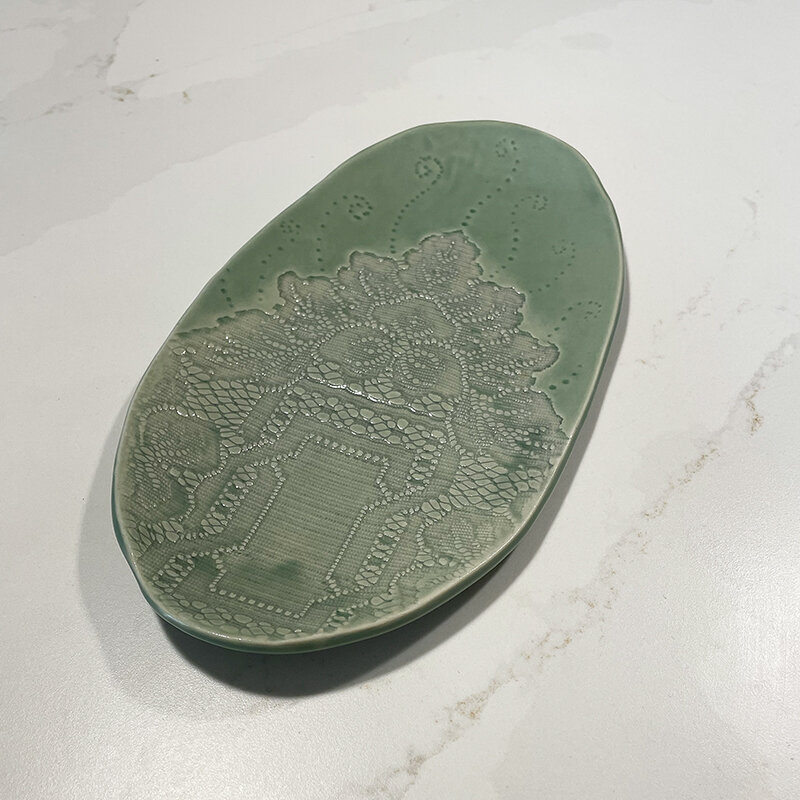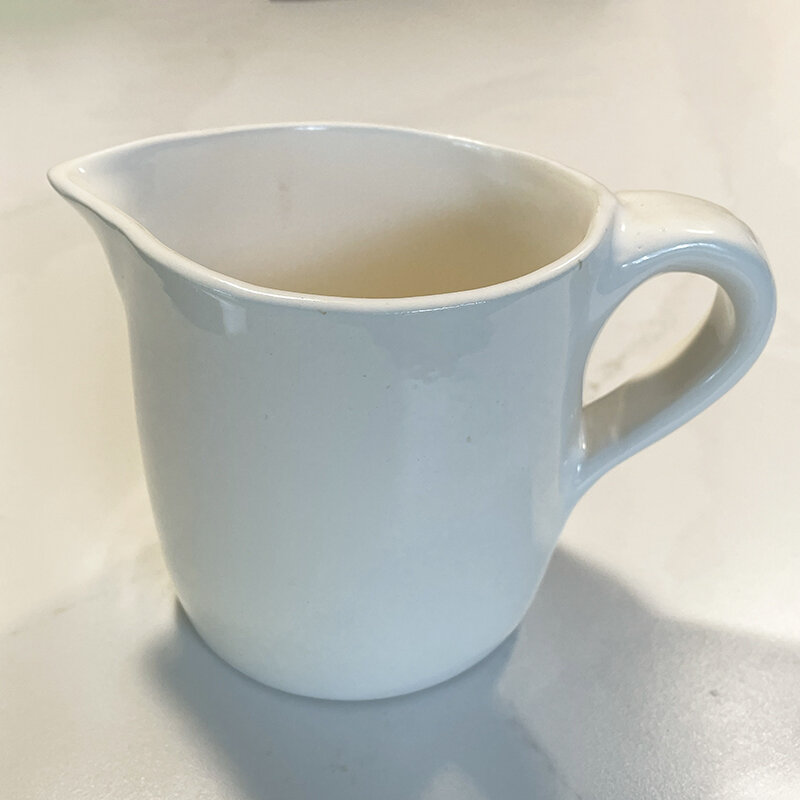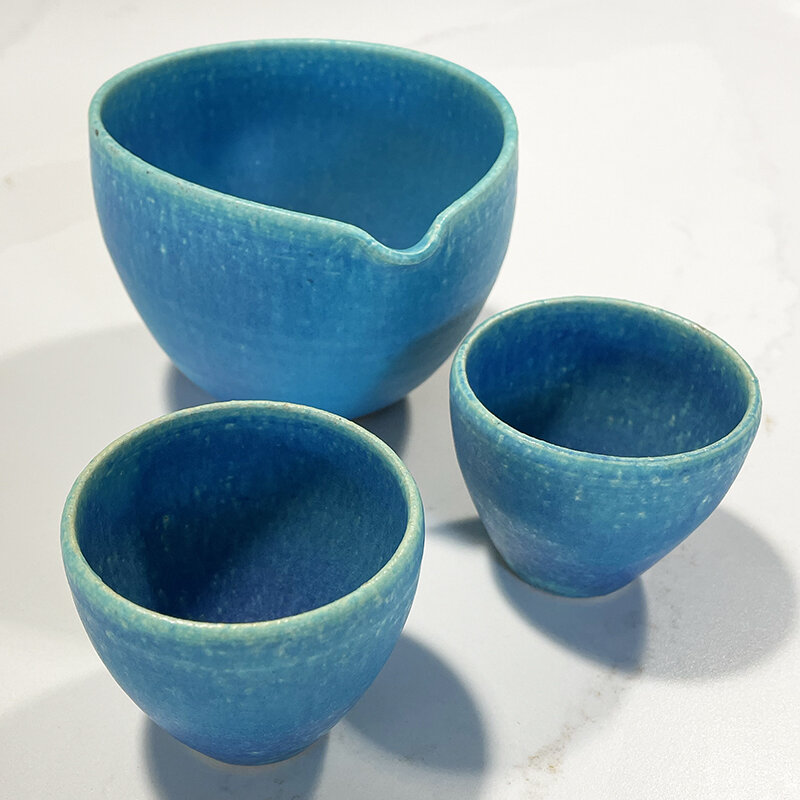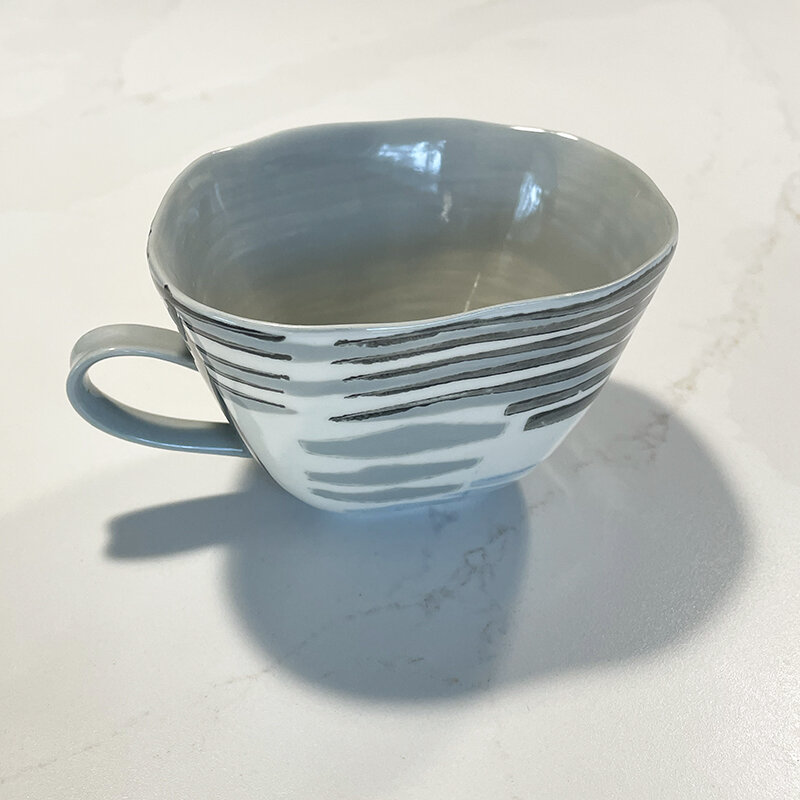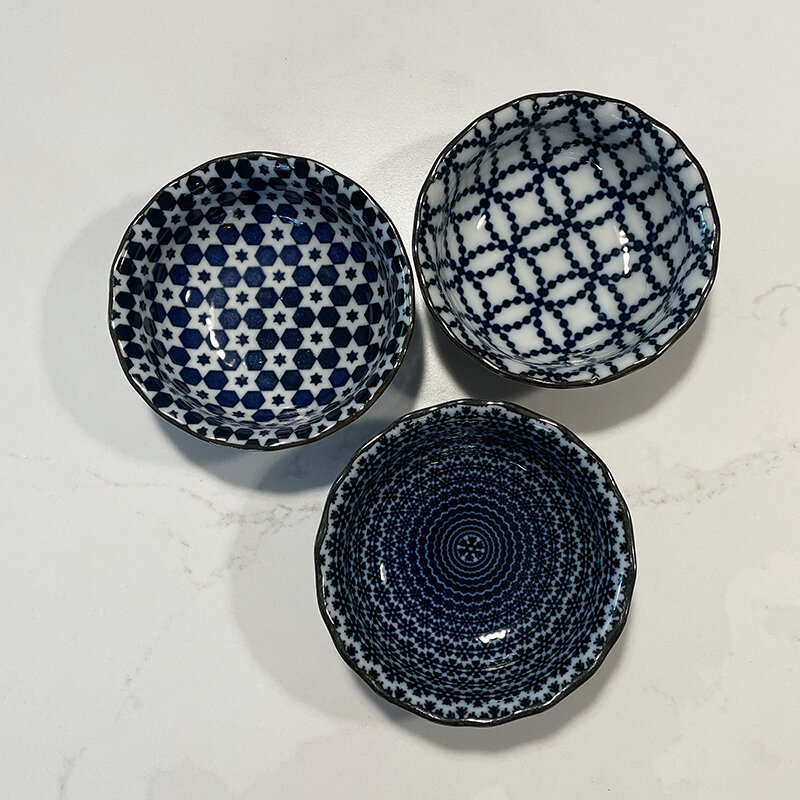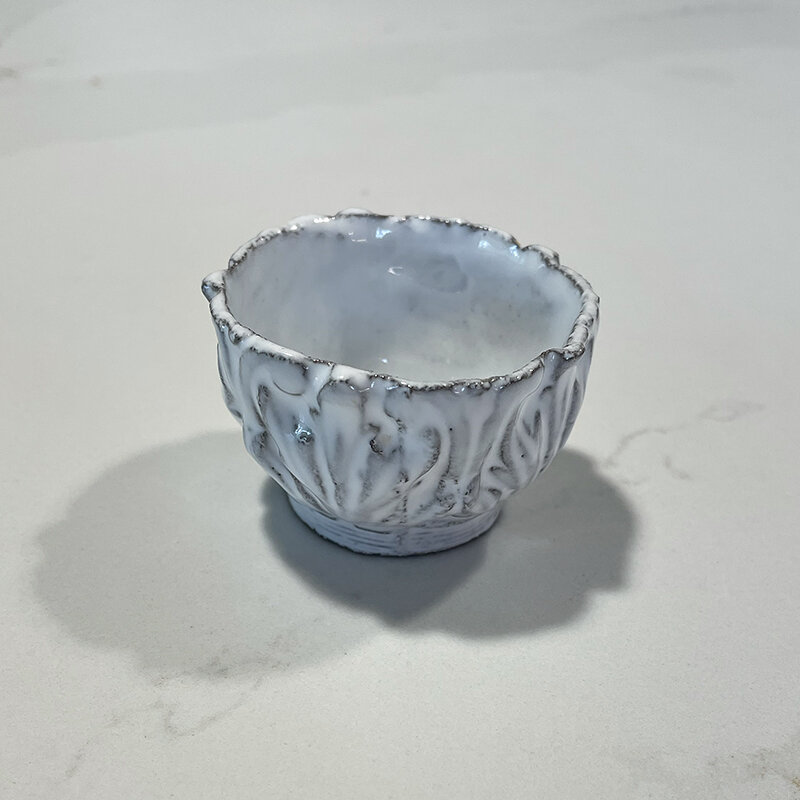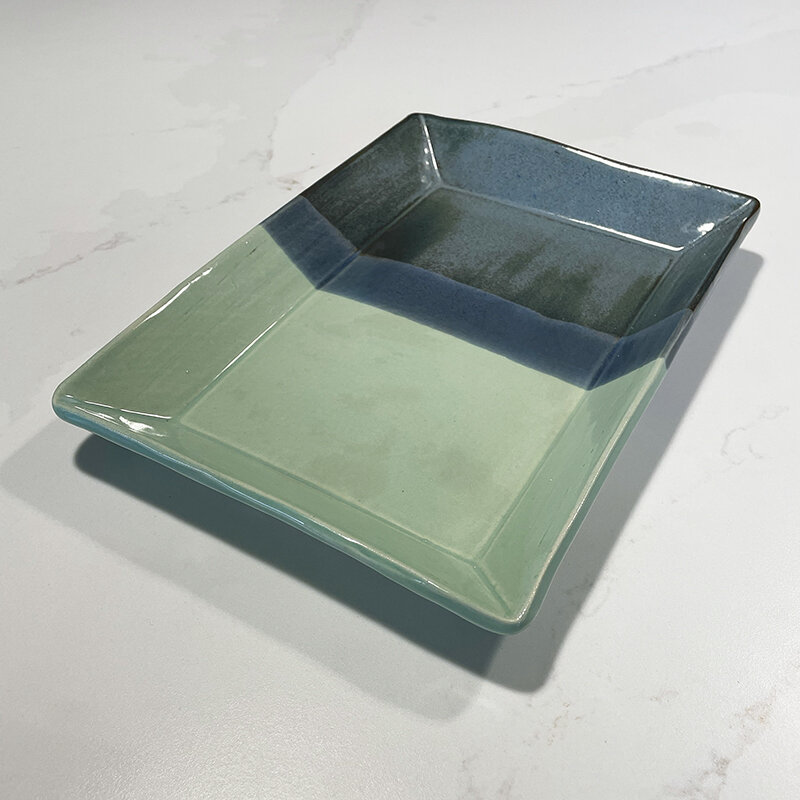Objects that Make Up a Life
I have a fondness for small ceramic vessels, and have been collecting them for years, from all over the globe. Most times I pick them up during my travels, but every once in a while I stumble upon something online that I can’t resist. I just received a sake server and cup set from a line called Hechimon, which was fired in an ancient kiln near Kyoto, Japan. I am not a frequent sake drinker, but the shapes of these objects, along with their piercing turquoise blue glaze and the story of this particular maker had me at hello:
“The name, Hechimon, is derived from the Japanese word used by the Shigaraki-yaki craftsmen for ‘one of a kind’ or unique things. Just as no two people are the same, no two Shigaraki-yaki pieces will be identical. Embracing various shapes and patterns that both nature and craftsmen bring about, the name, Hechimon, represents the craftsmen's playfulness and truthfulness to their products.”
It is mildly ridiculous how much joy these little objects give me.
Ditto for the small white-glazed milk pitcher I purchased in Amherst, Massachusetts, the indigo-patterned condiment bowls I found in Portland, the textured coffee mug I acquired in Door County, Wisconsin, and the bright blue nesting bowls I picked up in San Francisco. I also have a small collection of pieces created by a dear friend—a tray, a vase, a cup—objects I utilize all the time as I do everyday things like add olive oil to a saucepan or reach out for a pen.
Is it that they are handmade? Is it the colors? Is it that I feel like I’m able to get a sense of all the hands that contributed to their making, that the nature of their creation means every item is imbued with some trace of the human being behind it?
I met a ceramicist in Door County a few years ago in his waterfront shop in Ephraim. He had a few pieces that were set apart from all the tables and shelves filled with bowls, mugs, and plates. They were taller pieces—vases, lamps, or water pitchers—that started round at the bottom but then swooped up into a narrow opening, making it seem like he’d pulled the top rim up above the main body as if it were taffy. When I commented on how difficult it must be to make those particular pieces he paused and said, “Yes….I have to forgive everyone I know before I work on those.”
I had already started my informal ceramics collection by the time he shared that with me, but after his comment I was all in. He helped me better understand my own attraction to these beautifully-made utilitarian objects, and enabled me to hone my intuition when it came to choosing what to bring into my home. For it is not about quantity, but carefully-curated quality; not even quality, actually, but essence and feeling and calm.
My family’s estate sale at my grandparents’ house this past spring was a big event, with an array of items available—books, vinyl records, tools, old stereo equipment, kitchen items, linens, and other everyday objects. I picked out quite a few things to bring home, but was content to let most of it go. There were a few people who commented that it was sad to see all the flotsam and jetsam of the life my grandparents created go hither and yon, but I found it uplifting. These objects had been sitting stagnant for many years, and now they were being released into the world, to be held and used once again. Whatever trace of my grandparents (and, perhaps, their friends and relatives, maybe even me) remained deep within the cellular makeup of every glass, tray, and candle holder would now be diffused into new living rooms, breakfast nooks, and kitchens.
However slowly and carefully I have brought together all the objects that make our life hum and flow—from tables and chairs to pepper grinders and washcloths—they will someday be scattered to who knows where. While my husband and I might be tasked with their use and care now, they will never belong to us in any permanent sense. And no matter how long they might last while in our possession, that won’t prevent any future mishaps. I brought home a midcentury modern condiment tray that belonged to my grandparents, a set that included two glass dishes. While washing them, one slipped out of my hands and shattered in the sink. Poor Tilda had never heard such a string of f-bombs.
After all those years of use, after all the care I’d put into packing up each item, it only took a second before I ended up with the shattered remnants glittering in the sink—tiny shards of glass that can never be reassembled.
It was so tempting to feel devastated, but what could I do? I was rushing and distracted when washing those little dishes. Perhaps I hadn’t forgiven everyone I needed to forgive. Either way, it’s another story on top of all the stories that the condiment tray has already absorbed. It’s another reminder of the impermanence of it all, and the beauty of the here and now. All the objects of our lives help write the narrative of the life I’m creating—with my husband and family, our friends and our dog. They speak to his passion for cooking, my devotion to beauty; they express the invitation we extend to whoever walks through our front door: “Come on in. Have a seat at the table. We are very happy you are here.”
